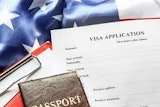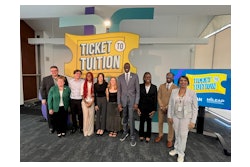Black high school students are significantly underrepresented in AP courses that provide students with a jumpstart on college and serve as an early predictor of college success, according to The College Board’s “Advanced Placement Report to the Nation.” Experts say checking teacher bias and improving identification of qualified Black students can help.
More than 1.3 million students from 16,000 schools participated in the AP program last year, up from 581,000 students and 12,000 schools a decade ago. In 2006, 14.8 percent of all graduating high school seniors scored at least a 3 on one AP exam — which makes them “qualified” in the subject, and earns them college credit for testing out of an introductory course.
Blacks are underrepresented in AP, comprising just 6.9 percent of AP’s class of 2006 but 13.7 percent of the overall student population. American Indians make up 1.1 percent of the overall student population, but 0.6 percent of AP students.
Asians represent 5.5 percent of the student population, but 10.8 percent of the AP population. Hispanic students showed equal representation at 14 percent participation and a matching student population while Whites’ level of AP participation at 61.8 percent is just shy of their representation in the student body — 65 percent.
Experts say Blacks and American Indians continue to lag because they’re not encouraged to take AP courses and many simply don’t qualify. The disparity in curriculum updates, teacher training, student academic preparation and local and federal funding make it an uneven playing field, says Trevor Packer, executive director of the AP Program for The College Board, along with panel members at the press conference when the report was released.
Hispanic students have made gains in states where they make up a significant percentage of the population and which feature targeted programs to increase involvement. Hispanic students in Florida, for instance, have benefited from aggressive initiatives that identify qualified Hispanic students through standardized tests, and then steer them toward AP courses.
Trevor Packer, executive director of the AP Program for The College Board, says the racial gap in AP stems from systemic problems that must be fixed beginning at the elementary and middle school level.
Packer also acknowledges teacher bias as one of the factors impacting minority student success. “As a former AP student myself, if I had been able to detect the most subtle form of discouragement it would have impacted me. We are concerned about this,” he says.
To address the problem, Packer says schools are shown analysis of PSAT scores to help them assess a population of students that may have been overlooked for AP classes. “We show them that these students being admitted would have the same exam profile as students who get in. We show very clearly to educators that these students have the same academic potential. We run training for AP teachers, and screen the instructors’ commitment to equitable access.”
Packer acknowledges that much of the success of AP placement in the Asian and White communities are also attributed to parental advocacy. “We have gone out into the African-American, faith-based community to help to arm parents with information,” Packer says
Dr. Berky Nelson, professor of the University of California, Los Angeles’ Center for Student Programming, says Black students are also impacted by the “cool factor” — which can hamper them from pursuing or taking advantage of AP classes.
The report acknowledges states that have made progress and those that still have work to do. Illinois and Florida were recognized for creating a sequential curriculum that better prepares students for AP courses. Maryland and Florida are noted for increasing the number of Black students who score 3 or higher on AP exams.
“There is a small amount of federal funding targeting this issue of equity, $33 million, which is only enough to help 33 districts build a more rigorous middle school curriculum,” Packer says. “It’s not nearly enough to address all urban and rural needs. We are encouraged by a proposed increase of $90 million in the U.S. Department of Education budget.”
The report is the third prepared by the College Board, which trains AP teachers and assesses how students did through its annual exam. The “Advanced Placement Report to the Nation,” reports on each state’s efforts to improve high school achievement by involving greater segments of the student population — including traditionally underserved minority students in particular — in the rigorous Advanced Placement Program courses.
Leading the Nation
States with the largest percentage of graduating seniors scoring 3+ on an AP exam in high school:
*New York (22.7 percent)
*Maryland (22.0 percent)
*Utah (20.8 percent)
*Virginia (20.7 percent)
*California (20.1 percent)
*Massachusetts (19.8 percent)
*Florida (19.6 percent)
*Connecticut (19.4 percent)
*North Carolina (18.0 percent)
*Colorado (17.9 percent)
–Dianne Hayes
There are currently 4 comments on this story.
Click here to post a comment.
© Copyright 2005 by DiverseEducation.com


















